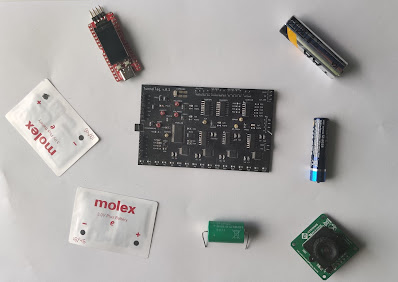Rapid Growth in the Internet of Things is Threatened due to the Energy Challenge
What is the energy challenge of IoT devices?
Why are the limited lifetime and frequent replacement of batteries a challenge for the growth of IoT devices?
First, replacing exhausted batteries on many IoT devices (potentially, billions of IoT devices) would significantly challenge. Second, it may be tricky as many of these IoT devices maybe even located in hard to reach places such as below bridges or in extreme environments in factories, where getting access to these devices might not be straightforward. Third, commonly employed batteries on IoT devices use toxic chemicals. Disposing of billions of depleted batteries can also negatively impact the environment, influencing the sustainability of the environment negatively. Fourthly, the energy-expensive operation requires operation on bulky batteries such as AA/AAA sized batteries. It limits the form factor, as the sensors are usually bulky, making it challenging to realise novel form factors such as sticker form factor sensors. Finally, operation on conventional batteries can also limit the reach of IoT devices. It can be challenging to deploy such sensors in environments such as inside the wall or at extreme heat where batteries may not perform well or might be challenging to replace the batteries altogether.
What is the reason for the high energy consumption of IoT devices?
To understand the reason why present-day IoT devices are so energy expensive, we look into their architecture. We find that their architecture has largely remained unchanged over the past two decades. IoT devices follow a pipelined architecture similar to as shown in the figure below:
Figure 2: IoT devices have a pipelined architecture where a physical phenomenon is sensed, processed, and communicated to a powerful edge or a gateway device through a series of steps. This architecture has largely remained unchanged over the past two decades. However, during this time, the individual components that make up this architecture demonstrate a significant energy asymmetry (energy-expensive components are shown in red). Radio or communication module consumes the most energy.
A typical IoT device operates in the following manner: The device senses a physical phenomenon. Then, it processes the sensor reading and communicates these sensor readings to a powerful device. Consequently, the IoT device performs these operations in a series of steps. In the first step, it uses a sensor to track these parameters. Then, it amplifies the sensor signal, transforms it into the digital domain using an ADC. Then, the microcontroller locally processes the digital representation of the sensor value. Finally, the IoT devices communicate the sensor reading using a radio transceiver (such as those support standards of ZigBee, LoRa, BLE) to a more powerful device.
To further elaborate on the operation of this architecture, we look at the specific case of an activity tracker: An activity tracker uses an accelerometer to detect our motion. First, the signal from the accelerometer is digitised using an ADC. Then, some processing, such as a machine-learning algorithm, is performed to infer steps. Finally, the information about steps walked, or other classified motion is transmitted to a powerful device such as a smartphone.
So what makes this architecture to be energy expensive?
There is a significant asymmetry in the energy consumption between different components of the architecture. We find that over the past two decades, the sensors have become exceedingly energy efficient. However, the rest of the architecture is significantly more energy-expensive when compared to sensors. This significant asymmetry in performing sensing, computation, and communication causes the overall power consumption of IoT devices to be high. It forces them to operate on bulky batteries with a minimal lifetime. The radio consumes the most energy on these devices. Performing wireless communication is typically 100–1000 X more energy-expensive when compared to processing or sensing operation on IoT devices.
Conclusion
We described the energy challenge of IoT devices and looked at the growing energy asymmetry between various components of the architecture. In the following article, we will look at possible solutions and directions to overcome the energy challenge of IoT devices. We will also look at the implications of overcoming the energy challenge, which opens up the exciting potential of battery-free Internet of Things or opening new form factor for IoT devices.
(C), Ambuj Varshney, 2021. Please reach me at ambujvarshney (at) acm.org
Views expressed in this article are my own, and not of my employer.
Biography: Dr Ambuj Varshney is a researcher and developer who has been working in the area of Internet of Things and Embedded Systems for more than ten years. His doctoral dissertation tackled the energy challenges of embedded devices. His doctoral dissertation was awarded the prestigious 2019 ABB Research Award. He has studied and worked at leading universities: Uppsala University, Royal Institute of Technology, and the University of California, Berkeley. His research contributions have been published at flagship and selective scientific venues of embedded systems, mobile computing and the Internet of Things. Before embarking on an academic path, he worked as a software engineer at NXP Semiconductors working on protocol stacks for wireless embedded systems.


Comments
Post a Comment